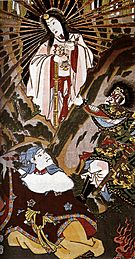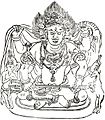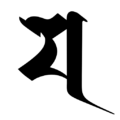Daikokuten facts for kids
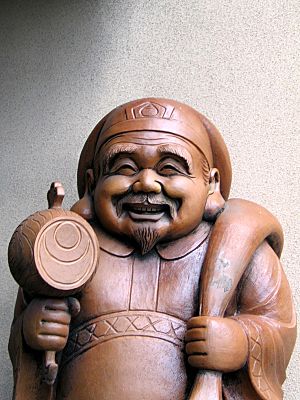
In Japan, Daikokuten (大黒天) is one of the Seven Lucky Gods. This friendly god actually came from an Indian god named Shiva. Daikokuten wears traditional Japanese robes and always has a happy, smiling face.
Contents
Where You Can Find Daikokuten
Pictures of Daikokuten can be found in temples in places like Tibet and China. But he is especially important in Japan, where he is a popular household god.
Long ago, there was a special belief called Fuku-nusubi. People thought they would get good luck if they found figures of gods and goddesses. This belief became so popular that special markets, like the Toshi-no-ichi (or 'year-end-market') at the Asakusa Kannon temple, became famous for selling these lucky figures.
What Daikokuten Represents
|
Mythic Texts and Folktales: |
Daikokuten is known as the god of wealth and the household. He is often linked to the kitchen. You can easily spot him by his wide, smiling face and his flat black hat. He is usually shown holding a golden mallet and sitting on big bales of rice. These symbols show his connection to good fortune and plenty.
How Daikokuten Looks
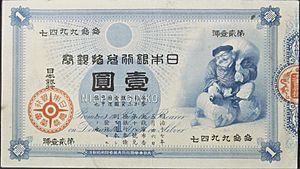
The very first Japanese pictures of Daikokuten showed him in two main ways:
- Some showed him standing. His left hand held a sack over his shoulder. His right hand was clenched and rested on his hip. This style was linked to the Shingon school.
- Other pictures showed him sitting down. This style was linked to the Tendai school.
Most of these early images showed Daikokuten wearing Japanese clothes. But a few even showed him wearing armor!
Over time, Daikokuten's look changed. From the 14th century onwards, he was more often shown as a smiling man with a round belly. He would hold a mallet and stand or sit on rice bales. This is the image most people recognize today.
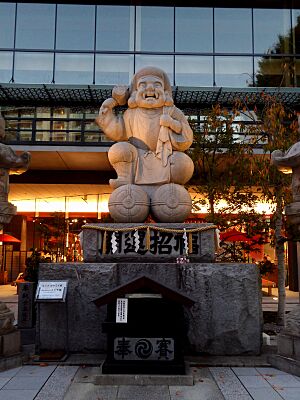
In the 16th century, during the late Muromachi period, something interesting happened. Three gods were combined into one! Daikokuten, along with Vaiśravaṇa-Bishamonten and Sarasvatī-Benzaiten, became the three-headed 'Sanmen Daikokuten' (三面大黒天). This means "Three-Faced Daikokuten."
How Daikokuten is Worshipped
Daikokuten is still a very important god in Japan. People worship him for good fortune and to protect their homes. You can find statues and pictures of Daikokuten in both Buddhist temples and Shinto shrines across the country.
Images for kids
-
11th–12th century stone stele of Mahākāla from Bihar (Metropolitan Museum of Art)
-
Mahākāla (center) flanked by the bodhisattvas Samantabhadra (left) and Mañjuśrī (right). Baocheng Temple, Hangzhou, Zhejiang, China
-
Ming dynasty statue of Dàhēitiān. Sichuan, China. 14th Century (with pedestal from the 16th century)
-
Mahākāla as depicted in the Womb Realm (Garbhadhātu) Maṇḍala, holding an elephant hide, a sword, a human and a goat
-
The iconography of the Buddhist Mahākāla is thought to be based on the mythic episode of Shiva spearing the demon Andhaka with his trident. Note the elephant hide (the skin of Gajāsura, whom Shiva also defeated) in one of his arms.
-
Qing dynasty statuette of Dàhēitiān. China. 17th Century.
-
Statue of Ōkuninushi as Daikokuten in Kanda Shrine (Kanda Myōjin) in Tokyo
-
Daikokuten with rats pulling a radish mikoshi, by Kawanabe Kyōsai
-
Ivory netsuke of Daikokuten with mallet and rat
-
Mandala of Mahākāla and the Aṣṭamātṛkas, from the Kakuzenshō (覚禅鈔), an early Kamakura period iconographic compendium
-
Sanmen Daikokuten, a fusion of Daikokuten (center), Bishamonten (left), and Benzaiten (right), by Katsushika Hokusai
See also
 In Spanish: Daikokuten para niños
In Spanish: Daikokuten para niños


